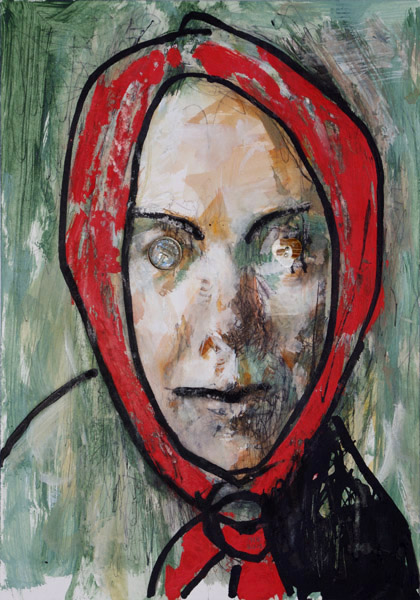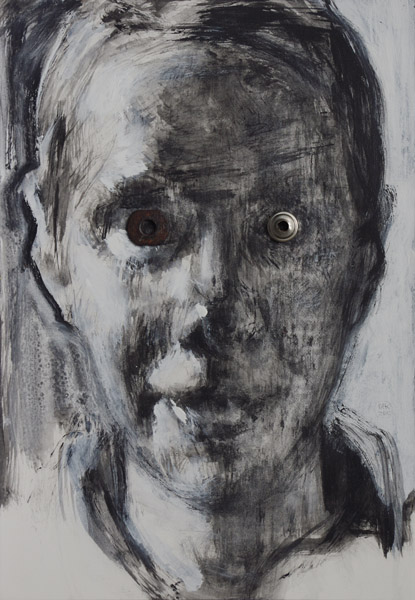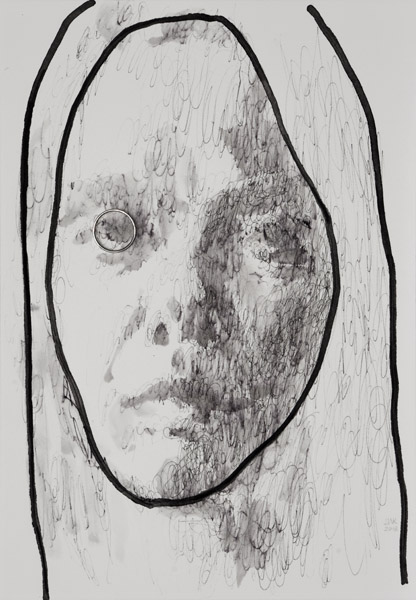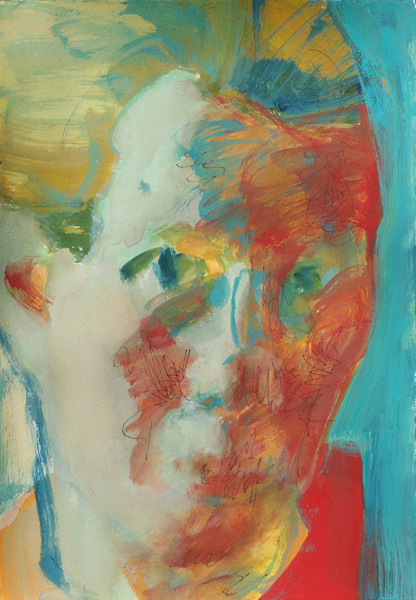Artists have been working with their own faces for a long time. I
don't mean self-portraits proper, but experiments with the face as
studies of psychological [show more]expressivity with material at hand; the
giants did it: Durer, young Rembrandt. Classicism here, as everywhere,
strove to standardize: the formulaic expressions of anger, fear,
surprise, etc. drawn by Charles Le Brun served as models for more than
a century and were reproduced in Diderot's Encyclopedia. I brought up
these examples to clarify the nature of Kazanskaya's self-portrait
drawings. Here once again there is a game, somewhat childish:
imagining oneself a monster or a charmer, pretending to be playful or
furious. The "differentness" and secrecy of play are most vividly
displayed in "dressing up". Here the "extra-ordinary" nature of play
reaches perfection. The disguised or masked individual "plays" another
part, another being. He is another being. [Johan Huizinga, Homo
Ludens: A Study of the Play-Element in Culture, Routledge, London,
2002, p. 13]. The playful antinomy of this actorhood, however, is that
while acting out another being, I remain at the same time myself. That
is why Maria included a "straight" self-portrait in the series.
[show less]
"An object in a picture and a picture as an object", by Boris Bernstein
Artists have been working with their own faces for a long time. I
don't mean self-portraits proper, but experiments with the face as
studies of psychological [show more]expressivity with material at hand; the
giants did it: Durer, young Rembrandt. Classicism here, as everywhere,
strove to standardize: the formulaic expressions of anger, fear,
surprise, etc. drawn by Charles Le Brun served as models for more than
a century and were reproduced in Diderot's Encyclopedia. I brought up
these examples to clarify the nature of Kazanskaya's self-portrait
drawings. Here once again there is a game, somewhat childish:
imagining oneself a monster or a charmer, pretending to be playful or
furious. The "differentness" and secrecy of play are most vividly
displayed in "dressing up". Here the "extra-ordinary" nature of play
reaches perfection. The disguised or masked individual "plays" another
part, another being. He is another being. [Johan Huizinga, Homo
Ludens: A Study of the Play-Element in Culture, Routledge, London,
2002, p. 13]. The playful antinomy of this actorhood, however, is that
while acting out another being, I remain at the same time myself. That
is why Maria included a "straight" self-portrait in the series.
[show less]
"An object in a picture and a picture as an object", by Boris Bernstein






























